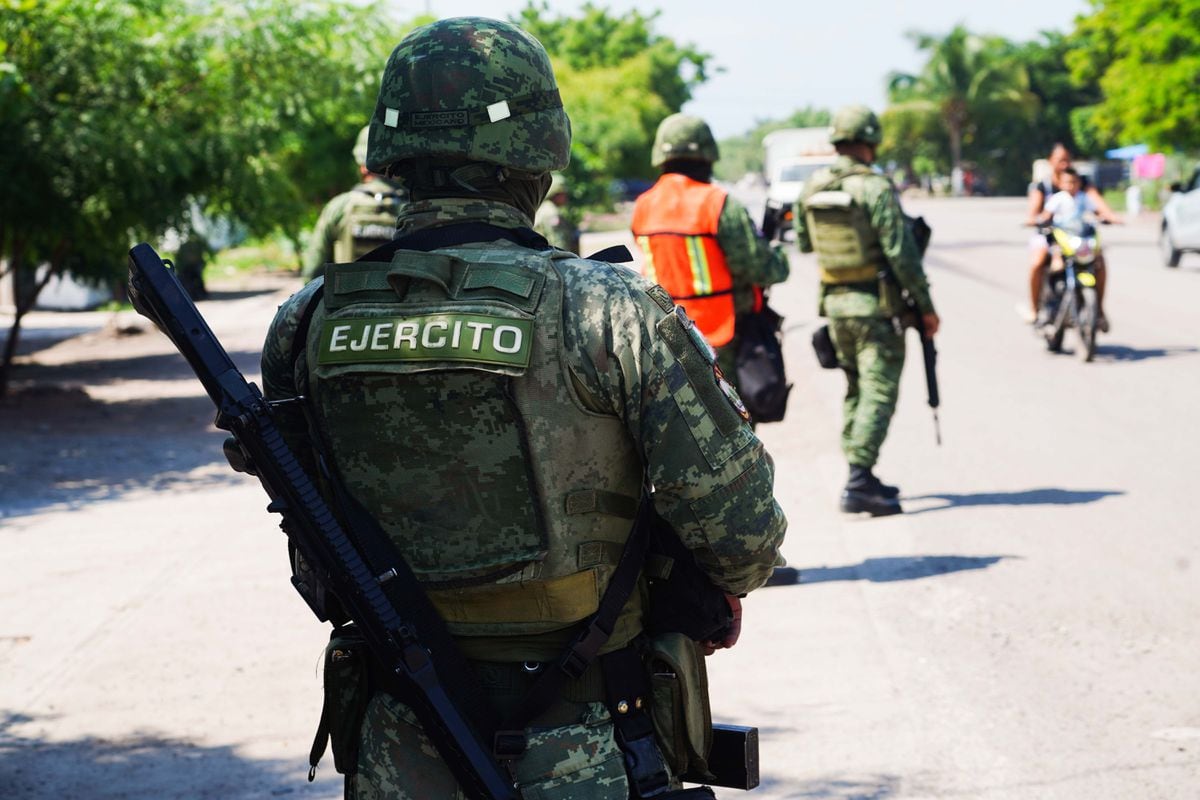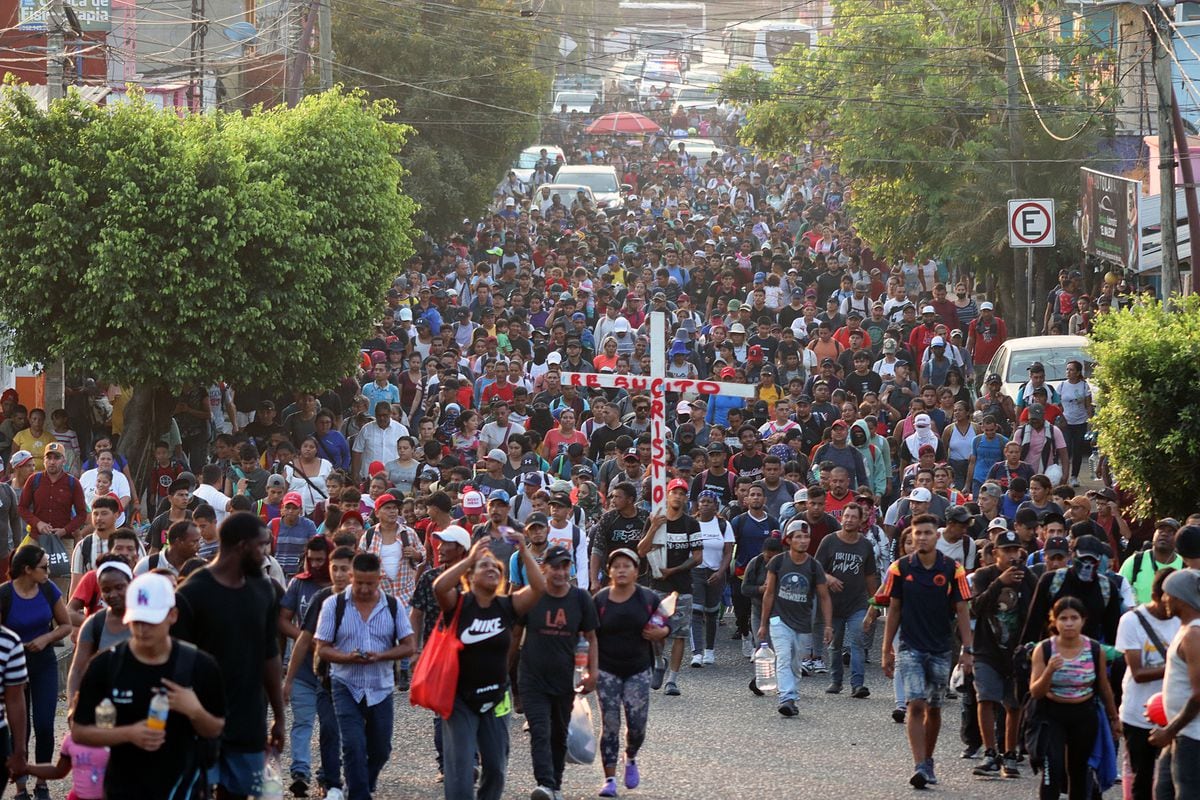Capture of a video attributed this year to the Jalisco Nueva Generación Cartel. SOCIAL NETWORKS
Aristóteles Sandoval, former governor of Jalisco, was shot and killed this Friday in Puerto Vallarta.
He got up to the bathroom in a restaurant and was attacked from behind.
In the hours that followed the attack, the authorities have opted for caution and have attributed it to organized crime, without giving further details.
The shadow of the Jalisco Nueva Generación Cartel (CJNG), however, hovers over the crime scene.
The question that assails public opinion is whether the murder of Sandoval is the latest attack by a group that has risen in a meteoric way to become one of the most powerful and feared in Mexico.
The conflict between the criminal organization and the former governor is an open secret in Jalisco.
"This direct combat has cost threats to those of us who lead the State, the State Prosecutor's Office, as well as political authorities such as the Secretary of Government and a servant," Sandoval said at a press conference in May 2018, a few months after concluding his mandate.
"For almost six years, the government under my charge has faced this criminal organization, the most dangerous in the country," added the governor.
The dispute in recent years is one of the lines of investigation that point to the CJNG as the perpetrators of the murder, a point that the authorities in charge of the investigations have handled with secrecy.
The group has not assumed responsibility for the attack either.
"We have the historic challenge of achieving together a state of peace and prosperity."
That was one of the phrases with which Sandoval closed his protest speech as governor of Jalisco, on March 1, 2013. Just eight days later, José de Jesús Gallegos, the Secretary of Tourism, was ambushed and shot dead. by two hitmen from the CJNG.
It was the beginning of a war.
Two years later, Operation Jalisco, which aimed to capture Nemesio Oseguera
El Mencho
, the cartel leader, ended with the downing of a helicopter, more than thirty drug-blockades in the state, and at least seven deaths.
In 2018, Luis Carlos Nájera, state prosecutor during the Sandoval government, was the target of a new attack by the cartel, which survived.
And this same year, Omar García Harfuch, chief of the Mexico City Police, was the one who was on the CJNG's target.
García Harfuch's vehicle was ambushed by 28 hitmen and after receiving three bullet wounds, the official did not hesitate to declare, still convalescing, that the one behind it was the Jalisco organization.
"The rapid expansion of the CJNG is characterized by its willingness to engage in violent confrontations with the security forces of the Mexican government and with its rivals," the DEA notes in its latest annual report.
The history of the cartel boom cannot be explained without the context of the war against drug trafficking that began during the government of Felipe Calderón (2006-2012).
The US authorities see two roots in its emergence: the Sinaloa Cartel, the Joaquín
El Chapo
Guzmán organization, and the Millennium Cartel, old allies of Sinaloa and drug lords like Ignacio Coronel.
They were first shock groups.
Since 2007, the armed arms of the Sinaloans signed the attacks against their rivals as the "new people."
Other cells called themselves the "kills-Zetas," in reference to their animosity towards that cartel.
The CJNG has the stamp of violence because it gained strength in the middle of the most violent period in Mexico's recent history and began to have its own power from alliances, betrayals, and power vacuums that remained due to the Government's combat against drug trafficking, explains Carlos Flores, an academic at the Center for Research and Higher Studies in Social Anthropology.
Flores points out that it is a military-style organization: with powerful weapons, urban combat tactics, a massive coordination capacity and several members hardened in the fight against the Government "to avoid the capture of its leaders or avenge their death or detention."
Last July, a video circulated online in which the group makes a show of force, launching bursts into the air and displaying armored vehicles.
The world keeps turning to Sinaloa when it thinks of Mexican drug traffickers, but the United States and Mexico are increasingly looking at Jalisco.
The State, which in the second half of the 20th century became a refuge for relatives of prominent drug traffickers, became of strategic importance for criminal groups due to its proximity to the ports of the Mexican Pacific.
The CJNG has specialized, above all, in the trafficking of synthetic drugs, such as fentanyl, which it produces with precursors that it receives from these ports - such as Manzanillo or Lázaro Cárdenas - from Asia and then distributes in the United States.
The fight for these places with groups that operated in the neighboring states of Colima and Michoacán occurred during the Sandoval government, which was inevitably marked by the irruption of the cartel.
It was also the same time when two of El Chapo's sons, Alfredo and Iván Archivaldo Guzmán, were kidnapped from a Puerto Vallarta restaurant in 2016, a crime for which El Mencho has been singled out.
Recently, the Jalisco Cartel has launched for the control of Guanajuato, in the Bajío area, which has triggered violence after the conflict that it is waging with the Santa Rosa de Lima Cartel, a local organization.
The United States has put El Mencho on its most wanted list and is offering a $ 10 million reward for anyone with information leading to his capture.
Mexican authorities are offering 30 million pesos ($ 1.5 million) and by mid-year some 2,000 bank accounts linked to the group were frozen.
The influence of the CJNG has extended to the courts of Mexico.
In November of last year, Isidro Gutiérrez Avelar, a Jalisco judge, was arrested and charged with receiving bribes and working directly for the cartel.
The alleged ties of Gutiérrez Avelar, who is awaiting trial, caused the Judiciary to carry out a “clean-up” of magistrates and judges accused of corruption.
Before being prosecuted, Gutiérrez Avelar was sent to another jurisdiction, a practice that is common when there are suspicions about robes.
"What we have just experienced is not just a homicide, it is a challenge against the Mexican State," said Enrique Alfaro, the current governor.
Before being treacherously attacked and in one of the cartel's areas of influence, Sandoval repeated several times that his government's position was not to enter into negotiations with criminals or to allow itself to be intimidated.
He also defended that the CJNG "was limited" and "under control."
"There is no alert state or red code in Jalisco," he declared after the attack on Nájera.
The truth is that the power of the El Mencho cartel, the criminal empire that became strong with the ashes of the war against drug trafficking, continues to grow: with a presence in all the states of the country and the reputation of doing whatever is necessary to strengthen its power.







/cloudfront-eu-central-1.images.arcpublishing.com/prisa/XBP3AZOSBBHAFD4X776DBYRKXU.jpg)
/cloudfront-eu-central-1.images.arcpublishing.com/prisa/SUWUS7YYTRADHGYXYQIRE2JO74.jpg)





